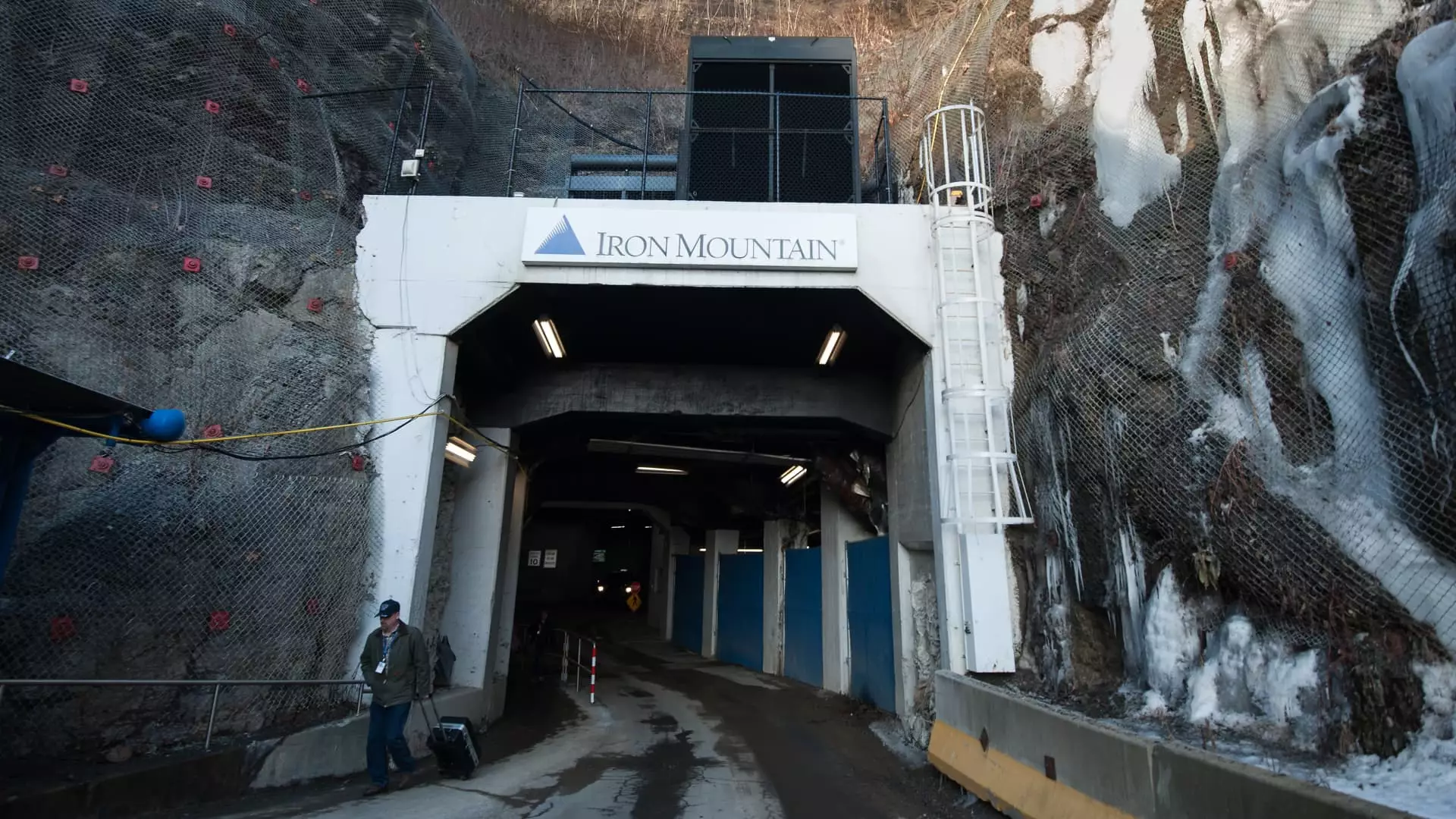The Future of Government Efficiency: Elon Musk’s Vision for Change

In a recent episode of high-profile discussions in the Oval Office, prominent entrepreneur Elon Musk presented a pointed critique of the federal government’s inefficiencies. He shared a platform with President Donald Trump, addressing a bewildering scenario concerning the retirement documentation storage system managed by Iron Mountain, a company heavily involved with federal contracts. Musk’s candid remarks not only spotlighted the archaic methods of document archival but also ignited a debate about the broader implications of government waste and the potential benefits of modernization.
During the conversation, Musk drew attention to a limestone mine in Pennsylvania utilized by the government for the storage of vital retirement paperwork, comparing its antiquated appearance to a snapshot of the 1950s. He noted that the speed at which these retirement applications are processed is hindered by the mine’s outdated elevator system, thus stalling the promptness with which federal employees can access their retirement benefits. This situation raises a fundamental question: in an era dominated by technological advancements, how can such outdated practices persist within government operations?
Musk’s comments accentuate a critical perspective on the structure and functionality of government entities. His characterization of the mine as resembling “a time warp” suggests a stark contrast between innovative businesses and the lethargic pace of governmental operations. This juxtaposition prompts a re-examination of the efficiency of bureaucracy and the need for urgent reform.
The immediate aftermath of Musk’s statements had noticeable ramifications for Iron Mountain, leading to a significant drop in its stock value. Bill Meaney, the CEO of Iron Mountain, responded to this turbulence with a sense of resilience, framing Musk’s focus on efficiency as a “growth opportunity” for the company. Despite the backlash, Meaney emphasized that the digitization projects within the company could align with governmental initiatives aimed at boosting operational efficiency.
Interestingly, the fallout from Musk’s critique may not have the destructive impact that some investors fear. As Meaney pointed out in an earnings call, only a small fraction of Iron Mountain’s revenue comes from contracts related to the archaic storage system. With $130 million derived from data center services and digital transformation projects, it is evident that Iron Mountain has diversified its revenue streams successfully.
Musk’s bold observations have ignited discussions regarding governmental financial strategies and potential cuts to contract spending. The introduction of DOGE (Department of Government Efficiency) underlines a commitment to reevaluating spending habits and fathoming ways in which the federal government can eliminate waste. This renewed focus on streamlining processes raises the stakes for companies like Iron Mountain, which may be under scrutiny for their role in existing archaic practices.
Wall Street analysts have taken a divergent stance on the situation. Some view the stock’s decline as an excessive overreaction, given that Iron Mountain’s revenue is not solely dependent on government contracts. This sentiment suggests a level of confidence in the company’s long-term viability and reinforces the notion that federal expenditures on outdated systems can be restructured without catastrophic financial repercussions.
For agencies contemplating the transition from physical document archiving to digital solutions, Musk’s comments serve as a clarion call for innovation. The echoes of more than 700 workers in the mine processing a limited number of retirement applications demonstrate inefficiencies that can no longer be rationalized in a technology-driven age. With advancing digital capabilities, the government now has opportunities to improve services significantly, benefiting both employees and taxpayers alike.
On a broader horizon, this push for government efficiency reflects an ongoing necessity for federal agencies to modernize. The ODI initiative could benefit from the insights that business leaders like Musk provide, emphasizing agility and reducing redundancies in a landscape where time equates to revenue. Furthermore, it places emphasis on the importance of partnerships between government entities and private corporations aimed at achieving shared goals of efficiency.
As Musk’s vision for government efficiency grows, it challenges the established norms in bureaucracy and compels stakeholders to engage in a more progressive dialogue surrounding potential innovations. The intersection of technology and governance is an area ripe for transformation, as the sentiments articulated in that Oval Office meeting may lead to significant shifts in how the government approaches documentation, compliance, and service delivery.





